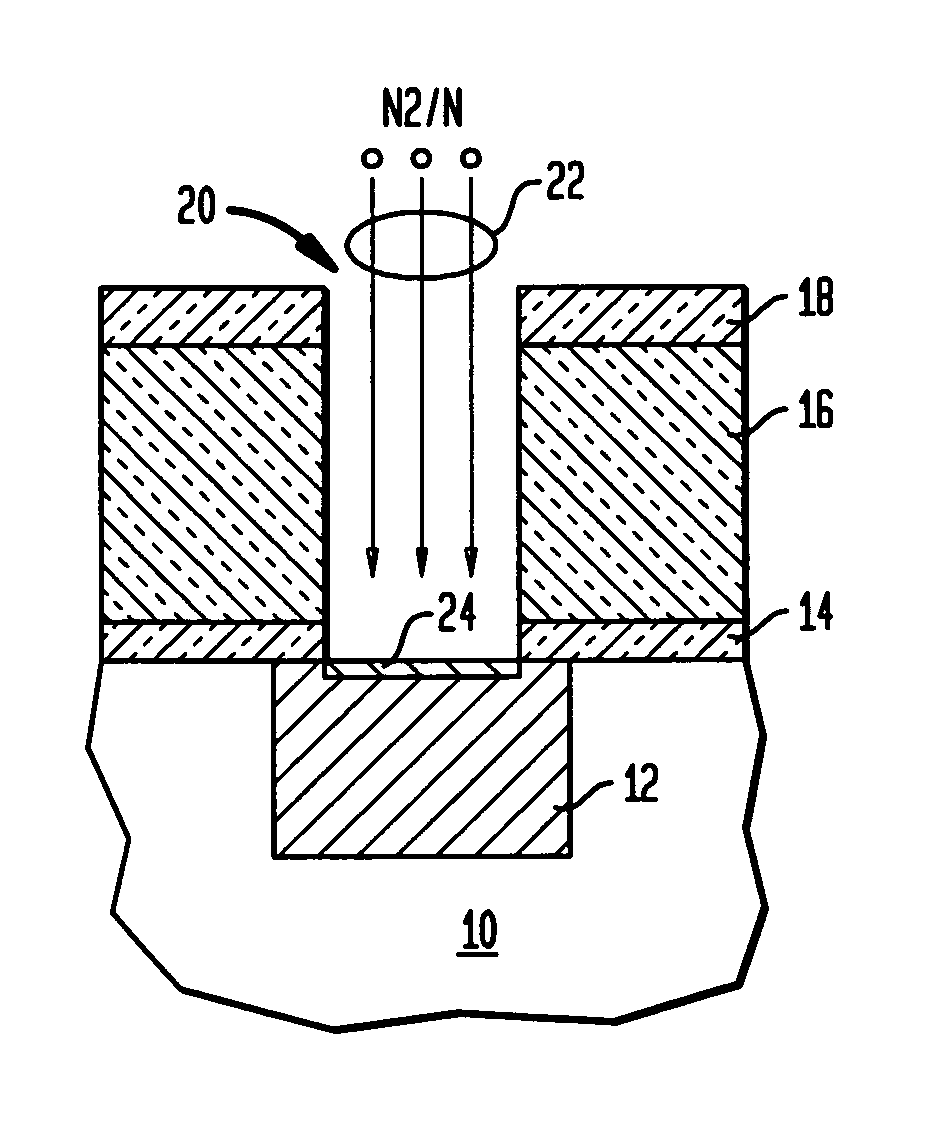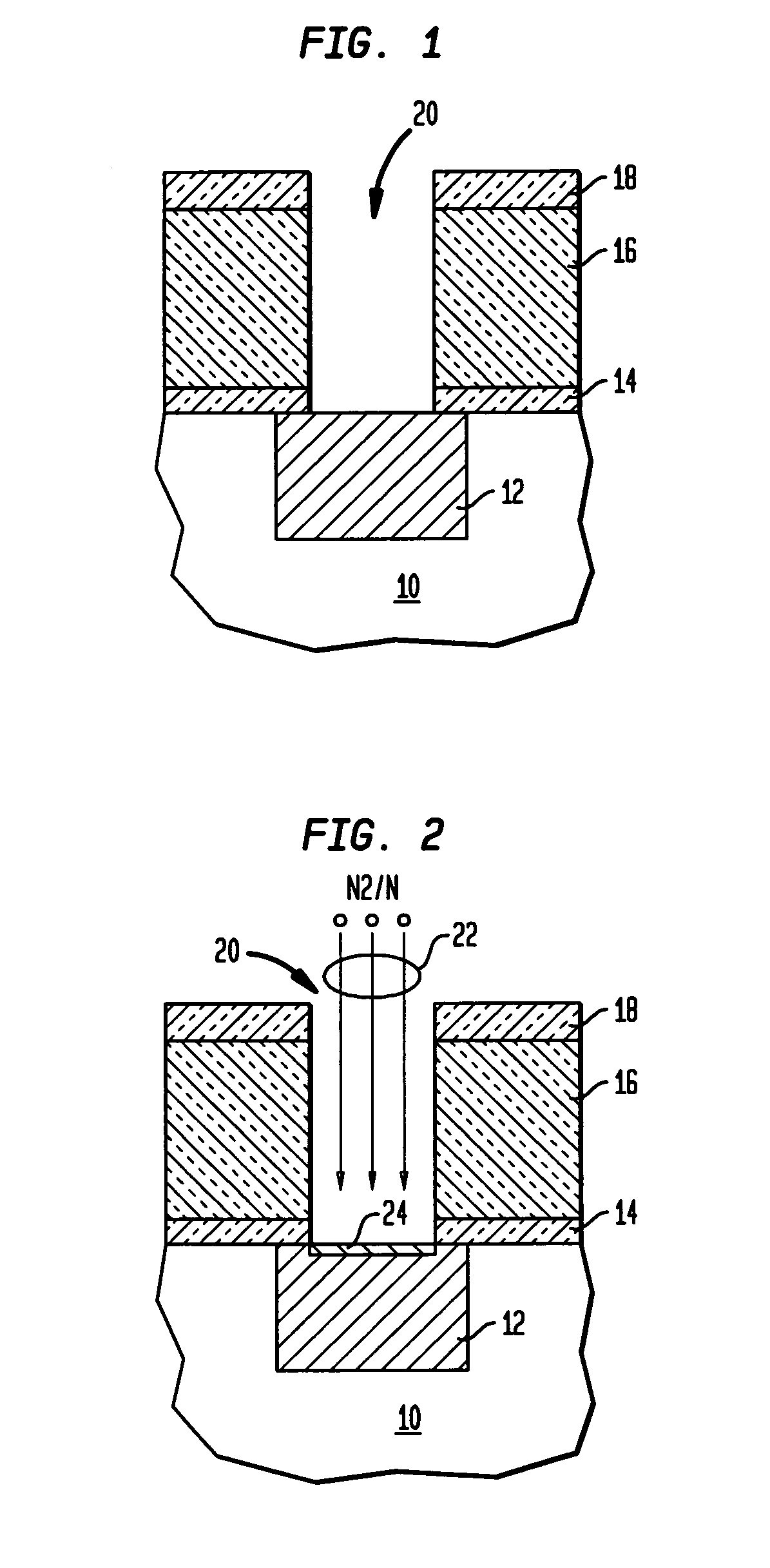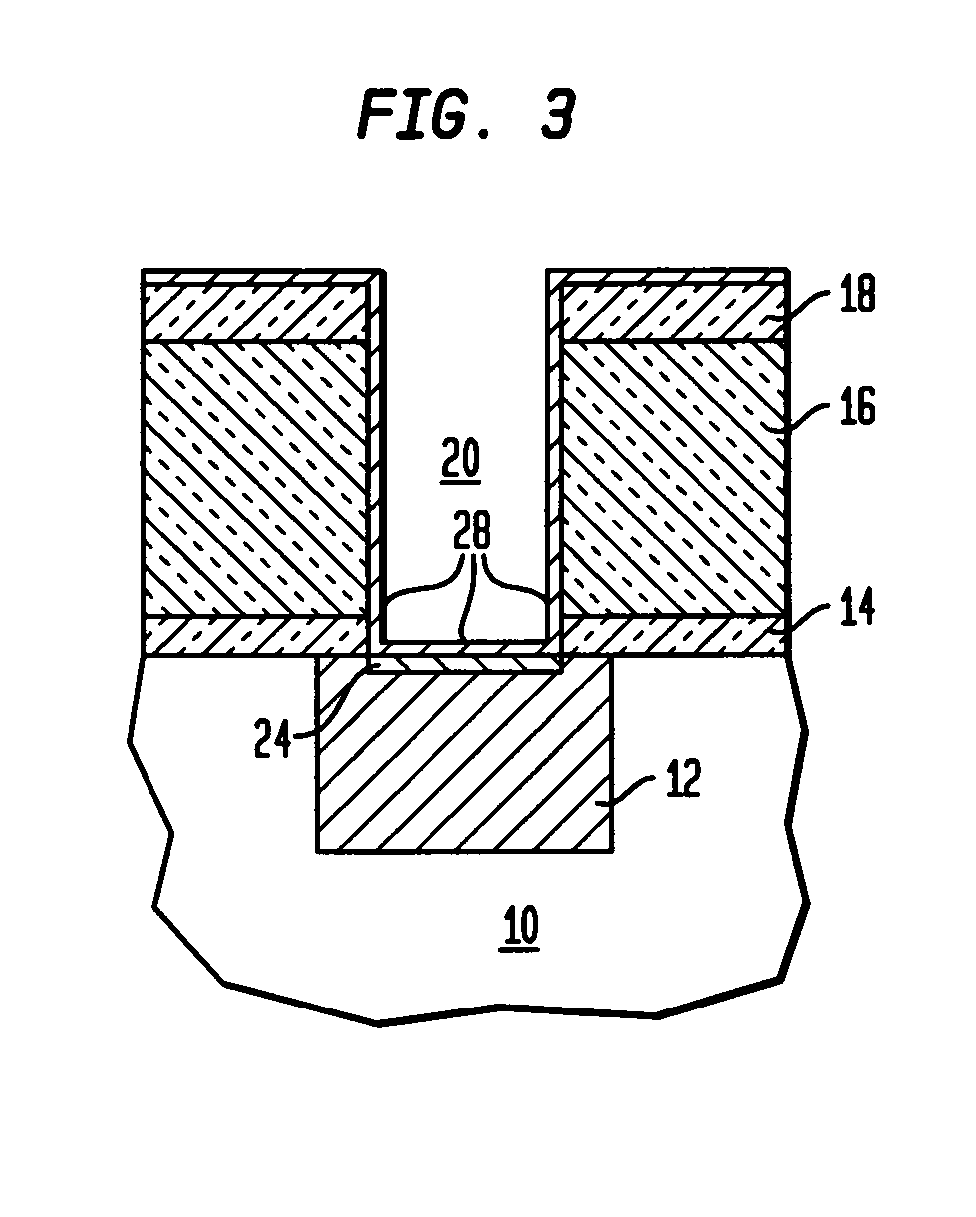Method of forming low resistance and reliable via in inter-level dielectric interconnect
a dielectric interconnect and low resistance technology, applied in the manufacturing of semiconductor/solid-state devices, basic electric elements, electric apparatus, etc., can solve the problems of interconnect delay, contaminating the lower conductive layer, interconnect delay becomes one of the most significant limiting factors of integrated circuit performance, etc., to improve resistivity, improve resistivity, and reduce resistance
- Summary
- Abstract
- Description
- Claims
- Application Information
AI Technical Summary
Benefits of technology
Problems solved by technology
Method used
Image
Examples
Embodiment Construction
[0019]With reference to the accompanying drawings, FIGS. 1–3 illustrate schematic cross-sectional representations of methods of cleaning and passivating the Cu surface and depositing a refractory liner with a low contact resistance in at least one via of a semiconductor device according to the invention.
[0020]As shown in FIG. 1, there is provided a substrate 10 which may be a bulk semiconductor including, for example, Si, SiGe, SiC, SiGeC, GaAs, InP, InAs and other semiconductors, or layered semiconductors such as silicon-on-insulators (SOI), SiC-on-insulator (SiCOI) or silicon germanium-on-insulators (SGOI). When the layered semiconductors are employed, the top layer of those substrates represent the top layer 10 shown in FIG. 1. Formed on substrate 10 is a representative metal layer (M1) layer 12 which may be a patterned wiring level of conducting material such as Cu, Al, or alloys thereof. Atop of the metal layer is a subsequently formed bottom dielectric capping layer 14 which m...
PUM
| Property | Measurement | Unit |
|---|---|---|
| thickness | aaaaa | aaaaa |
| dielectric constant | aaaaa | aaaaa |
| porosity | aaaaa | aaaaa |
Abstract
Description
Claims
Application Information
 Login to View More
Login to View More - R&D
- Intellectual Property
- Life Sciences
- Materials
- Tech Scout
- Unparalleled Data Quality
- Higher Quality Content
- 60% Fewer Hallucinations
Browse by: Latest US Patents, China's latest patents, Technical Efficacy Thesaurus, Application Domain, Technology Topic, Popular Technical Reports.
© 2025 PatSnap. All rights reserved.Legal|Privacy policy|Modern Slavery Act Transparency Statement|Sitemap|About US| Contact US: help@patsnap.com



